She moves through the forest with a calmed ease. She grew up here, the plants are her kin; the land, her mother. The woman forages along pathways carved by her ancestors and elephants alike. She picks mushrooms, draws in her nets, and tends to her fields. The forest is brimming with a plethora of life she is well attuned to.
Arriving at her favorite fruit tree brings a smile to her face. She carefully selects only the largest, most succulent, and the earliest fruits. Plopping one in her mouth, she savors the sweet and sour flavors and delicate texture. A seed is the best of life: full of positive potential, sweetness, and sustenance. Such a treasure as this she will keep for planting in the glade closer to her village. Perhaps one day her infant will see this seed bear fruit of a similar, or perhaps even better quality than this one.
She is a custodian of this land: looking and listening closely, and works with what she has. Her work encourages an abundance, even while she takes enough to feed her family. But they say a great evil is spreading this way from the lowlands. She doesn’t know, but it’s 1970, and the world is changing all around her.
In the distance, the sounds of war grow louder.
"The nature of men is to kill one another. They will never move past that stage."
— Vandy Rattana, “MONOLOGUE” (2015)
At ten years old and severely malnourished he is small, yet the boy’s dour expression belies his youth. His daily tasks are a facade masking his innocence. At work, he allows not a single superfluous movement. He handles his small canisters with a care born not of love, but necessity and fear. This is his expertise, and little does he know it will remain so his entire life.
In the blessed calm of night, he crawls through the jungles and fields of his homeland, stopping here and there to work. Unlike the older men in his company, the trees and mountains were never his kin, he holds no romantic feelings for the land in which he digs. He tries to have no feelings at all. It’s all just dirt, a game. His work is simple but proves unbearable for many. Few last long.
He finds a spot where they are likely to come – a clearing, a pathway becomes an invitation, a trap. He digs into the fertile earth with a sharpened stick, activates it, and places the cylindrical canister right where it will have the greatest effect, the largest impact. Then the boy camouflages the device with some dirt and leaves before moving on. Another land mine laid, ready and waiting. They call it a minimum metal mine, a mellifluous alliteration for such a grisly, and crude object. Made mostly of plastic and powder, it evades easy detection, yet maims and kills just the same.
As an orphan, he has known little of life’s pleasures. A gun to him is as much a toy as it is a distraction from the countless horrors around him. He shoots at birds. He shoots at people. A land mine is a challenge, a puzzle. He holds the spot of each and every mine he places in his head: a mental map he keeps in order to survive his trips back to the camp, but with which today he uses to save others, to return the land back to safety.
The Khmer Rouge call land mines perfect soldiers, for they lay in wait for as long as is needed. Unlike the young boy, they require no food, no water. His flesh is weak in comparison. The mines are always ready to kill, day or night. Unlike him, they never – not ever – cry; they remain unburdened by nightmares. He cannot help but feel jealous of the mines, for they’re never berated by his Khmer Rouge cadres, who push him to be ever more like the mines. A landmine is a permanent convert, unchanging to political winds, social changes, weather: it only does one thing, and it does it horrifically well.
But his name is Aki Ra, and he is no land mine.
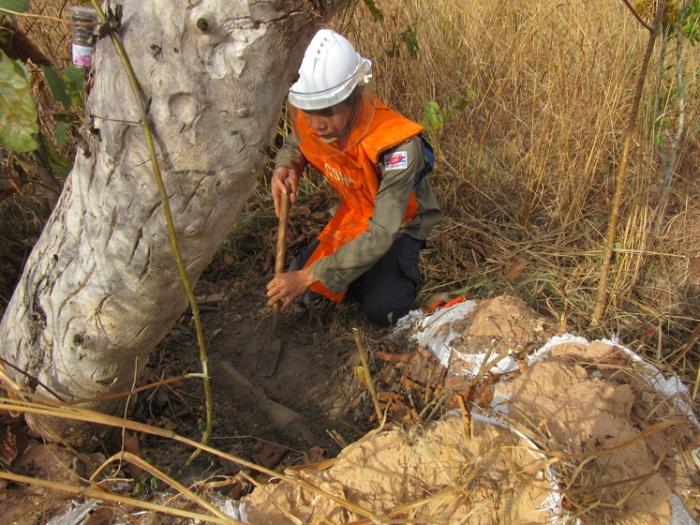
Działalność Aki Ry. Dzięki uprzejmości Billa Morse, prezesa Landmine Relief Fund.

Działalność Aki Ry. Dzięki uprzejmości Billa Morse, prezes Landmine Relief Fund.
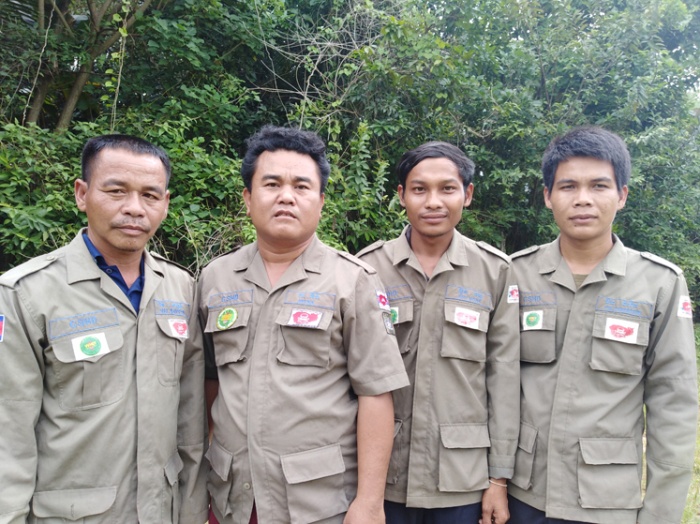
Działalność Aki Ry. Dzięki uprzejmości Billa Morse, prezesa Landmine Relief Fund.
What does it mean to live well in a troubled land? Can we ever escape from the past? What does progress and healing mean here, in Cambodia, on land scarred by mines, pollution, haunting memories, and dirty politics? Over the last few years living here, Cambodia has become a second home for me, but still, I’m in no position to answer such questions alone.
I returned to live in Cambodia at the start of 2015 after an invitation to help run Sammaki Community Arts in Battambang. Sammaki was a diverse and vibrant space with art classes, exhibitions, workshops, an international residency program, and more – I had quickly agreed. Everything was free, and it was an incredibly open space. It is there that I met my now wife, Cambodian artist Heak Pheary, who was Sammaki’s manager and arts teacher.
Pheary was perfect for Sammaki in that she was as deeply committed to her community as she was to the arts. She sought to keep Sammki in a more intimate relationship with the pressing ideas and visceral concerns of everyday Cambodians, rather than act as a White Cube bubble. Accordingly, we worked together with schools and NGOs throughout the province to organize a series of workshops on pollution and the environment.
Having witnessed plastic transform the once idyllic landscape surrounding her home, Pheary turned to plastic as her material of choice, especially plastic bags; used for a few minutes before being discarded – left to clog the earth for decades, even centuries. Plastic is agreeable to sculpting, colorful, but also holds many metaphoric and literal parables ripe for her students. “Today,” Pheary tells me, “trash is like our veins, it is the blood connecting everybody.” We began collecting.
Pheary taught her students about the toxicity of plastics, which are burned nightly here in lieu of a state trash service. She asked her students to use less, but to bring what they did use into class. She modeled a pathway for them to engage with the world around them in a tangible and conceptual way; that our habits and lives could be as sculptures, designed as you wish. She told them that their young, pliable, and creative minds were the future of this country, and that there was hope. In a country plagued by a legitimate fear of speaking out, of change, this was radical.
Now, Pheary and I seek to instill such lessons in our baby. But are we too late?
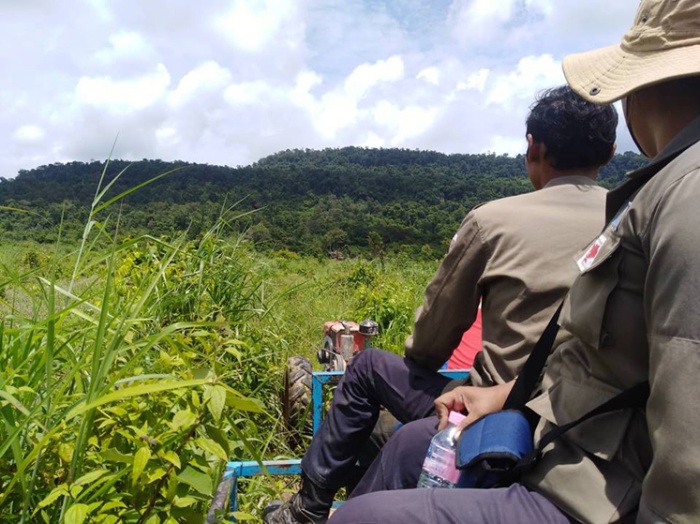
Działalność Aki Ry. Dzięki uprzejmości Billa Morse, prezesa Landmine Relief Fund.
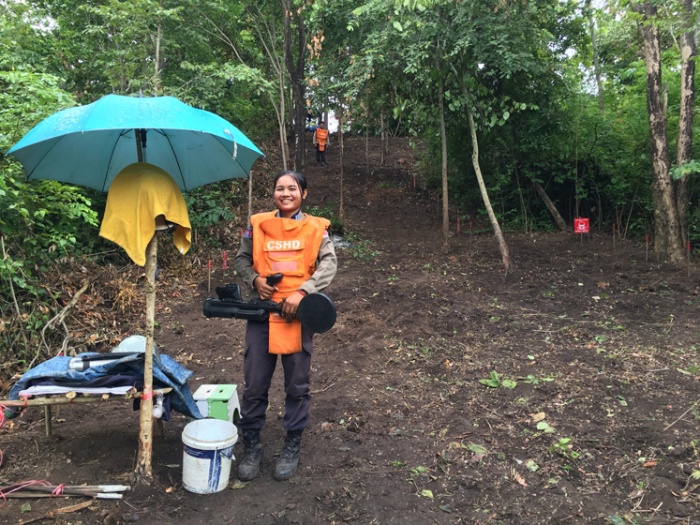
Działalność Aki Ry. Dzięki uprzejmości Billa Morse, prezesa Landmine Relief Fund.

Działalność Aki Ry. Dzięki uprzejmości Billa Morse, prezesa Landmine Relief Fund.
Theorist Heather Davis writes: "Until the invention of the synthetic polymer that we have come to know as plastic; the arts held a virtually monopoly on artifice, now it is chemical engineers who re-make and re-fashion the earth.” Plastic is created from eons of life compressed for millions of years into crude oil, which is then extracted, shipped, processed, and formed into a single-use item, only to be casually discarded, all within a few months. That throwaway then leaches toxins into the biosphere for centuries. This profound collapsing of time and matter for but a quick profit, at the expense of all else, slowly diverts our present towards an increasingly toxic future.
And this sealing of time and matter is exactly what Davis describes as the true function of plastic, which “refuses its environment creating a sealant or barrier that remains impermeable to what surrounds it. It influences its environment while remaining mute to that environment’s influence.” This is doubly illustrated in how we use plastics, but also how it lives on so long after our use. We turn to plastic as a quick sealant, an artificial vessel, and container: neatly separating life into compartments which previously were porous, leaky, and in relationship. Plastic forecloses opportunities for agency, for living responsibly within our land. It is a toxic, cancerous story increasingly difficult to escape.
Aki Ra’s early life was one such story.
When he was five years old he was captured by the Khmer Rouge. He was a soldier at ten, but not before they killed his parents. The Vietnamese invasion heralded the end of the Khmer Rouge regime, but offered Aki Ra no respite from war. In 1987, he was recaptured and re-conscripted to the fight, only now against his former cadres. Later he was forced into the newly formed Kampuchean People's Revolutionary Armed Forces. All the while planting mines across the country.
When peace finally seemed in sight with the establishment of the United Nations Transitional Authority in Cambodia (UNTAC) in 1992, Aki Ra at last had an opportunity for a real change. But his mines – and the people killed and maimed by them – haunted him as much as they did the landscapes. 4,320 Cambodians were killed by land mines in 1996 alone, well after the official war was over. Aki Ra saw his victims everywhere: on the streets and in his nightmares.
A 1991 study of Cambodian refugees diagnosed 86% with post-traumatic stress disorder (PTSD), an intense negative reaction to unprocessed trauma, which greatly hinders healing. PTSD physically alters neural pathways in your brain, condemning the patient to relive the traumatic event, over and over, sometimes for even decades after. With PTSD, your brain’s response to trauma can become worse than the original event itself, spiraling out of control in the mind. High rates of PTSD in Cambodia are not without cause.
Along with Angola and Afghanistan, Cambodia bears the heavy burden as one of the most heavily mined countries in the world, with 64,000 casualties recorded since 1979, the official fall of the Khmer Rouge. From 1992 to 2018, “1 million anti-personnel mines, 28,832 anti-tank mines and 2.7 million explosive remnants of war had been found and destroyed.” Still, to this day it is believed that nearly 2,000 square kilometers of land remains booby-trapped with landmines and UXOs. Such traumas of war lurk throughout Cambodia, even in the most pastoral, quotidian, and even bucolic of settings.
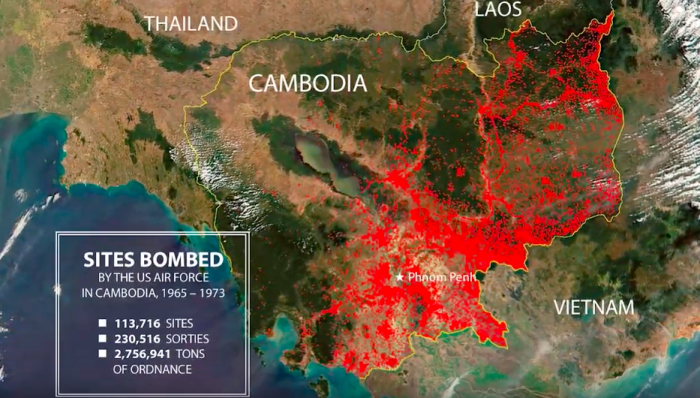
Tereny zbombardowane w Kambodży przez Siły Powitrzne USA w latach 1965-1973. Klatka z filmu "Artist profile", (c) Gugenhaim Museum; źródło.
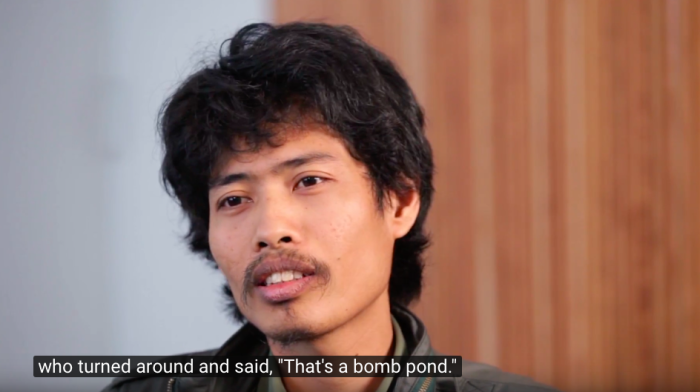
Vandy Rattana. Zdjęcie z filmu"Artist profile", (c) Gugenhaim Museum; źródło.
We find such ravages evidenced in artist Vandy Rattana’s photo series Bomb Ponds, (2009). The photographs are neat, tidy windows into the land of eastern Cambodia. The landscapes are easy to overlook, and little jumps out even upon closer inspection: there are small circular bodies of water, and that water is embraced by fecund growth, usually paddy. On their surface, the ponds offer no sign of anything other than a lush and pastoral Cambodia. But, like a simple plastic bag, whose life is entwined with toxic extraction, hyperconsumption, globalization, war, and toxic futures, the true story of these ponds is complex and slow to tell, but builds exponentially in the retelling until almost unbearable. Only Vandy’s title offers a clue as to these waters’ true nature, their becoming.
They are not simply ponds, but warpaths; land pocked by imperial crusades.
They are craters.
Like comparing a rubber plantation with an old-growth forest by only the number of trees, despite their surfaces, these ponds are by no means healthy, diverse, or vibrant landscapes. Standing before them, Vandy must remind himself, again and again, these are craters: festering wounds. And yet they look like, if he were a child in the cruel heat of April and May, he’d play in their blessedly cool waters. It looks like if he were a farmer, he’d carry water from these ponds to water his crops, feed livestock.
But the fecund surfaces of the present cannot escape the true hells of their creation. Here, the legacy of war is hinted at even among the ripest of pastures; in the most quotidian experiences. Some ponds remain so toxic to this day that any livestock would die, should they drink from their pestilent waters.
“When I live with nature, we share only one life.
Nature and I are like one.
Everything that I have is a gift from nature.”
— Reem Sav See

Reem Sav See, zdjęcie: Kalyanne Mam.
Although increasingly rare, some waters still look just as they are: fertile and pristine. Reem Sav See rows down one such river. Wildlife and humans frequent these banks, and leave only sated. Her nets bear more than enough fish to feed her family. One would hardly know that war ravaged this area not so long ago, but the forests and rivers heal much, if only we’d let them. If only we remembered how to work with them, rather than against. She never forgot.
Like her ancestors before, See moves across this land with a calmed ease. She knows the trees and waters here and treats them as family. The pathways are as familiar to her as the lines on her husband’s face. Many of the fruits growing “wild” here were in fact planted by those who walked these woods before. Those who carefully selected and nourished such diversity for future generations to enjoy. Here, seeds are cultivated by people and land alike.
See is the focus of Cambodian documentarian Kalyanee Mam’s short film, Fight for Areng Valley (2014), which is an alluring amble through a typical day's work, as See expounds on her intimate relationship with nature – one now jeopardized. As an indigenous Chong of Koh Kong Province, See began protesting a planned hydroelectric dam to protect her village and way of life, which, as we see, is inextricably entwined with all the dam would wash away. See is a woman of place, and her place is imperiled.
For See, to be a steward of the forest changed with the encroaching development. Her life modeled responsible agency within a forest, all that entailed changed with the dam. Similarly, Mam models responsible agency as a documentarian of See’s story: simply capturing the most touching and artistic narratives was never enough, she has to do more.
Mam masterfully moves within a media ecology, working to maximize her stories to the greatest effect. For her award-winning feature documentary, A River Changes Course, she organized free screenings for thousands of Cambodians all over the country, especially young students, right before national elections. It wasn’t for the sole enjoyment of a largely white audience abroad but for a discussion about the kind of country Cambodia wants to be.

Klatki z filmu "A River Changes Course" (2013), reż. Kalyanne Mam.

Klatki z filmu "A River Changes Course" (2013), reż. Kalyanne Mam.
For Fight for Areng Valley, Mam adopted a more outright activist approach in a connected documentary for her NYTimes op-doc. In this way we see Mam, like See, hold herself accountable to the politics of her stories and actions. For, as Mam and See illustrate, the stories we continue, return to, or invent now will guide us during the coming years, a vitally important period that could define the coming centuries on this planet. These stories, and the actions they can help engender, may very well define who lives and who dies, which species live and which do not, who is held accountable and who is not, and much more. Mam is an activist storyteller of the first order.
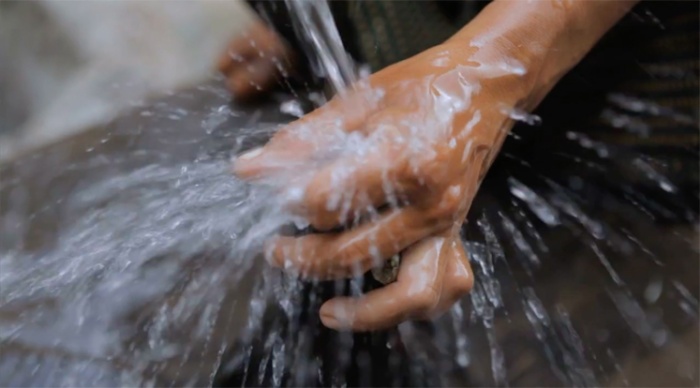
Klatka z filmu "A River Changes Course" (2013), reż. Kalyanne Mam.
As biologist and author Robin Wall Kimmerer writes in her fantastic book, Braiding Sweetgrass: Indigenous Wisdom, Scientific Knowledge and the Teachings of Plants:
The story of our relationship to the earth is written more truthfully on the land than on the page. It lasts there. The land remembers what we said and what we did. Stories are among our most potent tools for restoring the land as well as our relationship to land. We need to unearth the old stories that live in a place and begin to create new ones, for we are storymakers, not just storytellers. (pg. 341)
There will be no healing without sweat and work; the planet is already choking on pollution, war, and greed. A generative story, like a seed, needs watering. We must remember the past and find new stories to better guide our actions in the future. But first, we need redemption.
“They killed my parents, and they're still alive. When I get angry, I want revenge. But then their children will take revenge on me, and there will be no end.”
— Aki Ra
In search of pathways toward true healing, I return to Aki Ra. While his actions as a child are entwined with, and reproduced immeasurable suffering, upon given the opportunity to leave war behind, he instead dedicated his life to removing land mines, one by one. His is the rare story that is as good as his deeds.
Aki Ra began returning to the minefields to remove the mines by hand, with no protection and jerry-rigged tools. Stricken by the number of orphans who had lost limbs and families due to the mines – of which Cambodia has one the highest percentages in the world – he and his wife began adopting and raising them as their own. To fund this work, he opened his house to the public as a small museum in 1994, where he displayed all the mines he had removed and deactivated, charging visitors a $1.
His work has flourished. In 2007, he reopened the house-gallery as a fully-fledged museum. In 2008, his official demining team began, Cambodia Self-Help Demining, which now has 38 employees. His sister organization, The Rural School Village Program, now helps fund 22 schools. It is estimated that Aki Ra has single-handedly removed around 50,000 land mines, but that is not enough for him. While he heals the past, he works hard to build a future: “I opened this museum because I wanted to teach younger generations not to repeat the past,” he said. His actions are not enough without teaching, without a story.
Aki Ra models the profoundly hopeful malleability of the human mind and spirit. Haunted by decades of war and violence, Aki Ra has managed to adapt and thrive in post-war Cambodia, and do so in a way that benefits all life. Despite PTSD, and nightmares, with Aki Ra's help, Cambodia has returned more than 1,800 square km of land back to safety: back to plowable, playable, even bountiful land. Back to a land he had never known: a feat the term “neural plasticity” might only diminish.
Recently, my wife and I have been planting a small orchard with trees not much older than our infant son – and as he grows, I promise: he will come to know this soil. He will feed and water those trees, and in return they will provide fruit and air to many. I show my son the seed of a mango, and I tell him, “one day, this will become a tree.”
Eyes wide and curious, I know his elastic brain is soaking up everything, even if he is yet to understand. But still, I carry him and name the world for him, over and over. I want him to be intimate with this land, and he accepts too eagerly: trying to eat the dirt as often as the fruit and we all laugh.

Vy Phalla. Klatka z filmu "Last World", Kalyanne Mam.
Together, we are beginning the orchard’s first installation of discarded plastic bags gleaned from the fields of rice and pesticides that surround our land. As we work on the tiny permaculture garden, plant trees, and make this artwork, my wife and I seek to synthesize and enact the lessons embodied and displayed by Aki Ra, Kalyanee Mam, and Vandy Rattana. We meditate on their questions, write on and explore these issues, but always try to take concrete steps, today; to heal from the past, to grow better for tomorrow. We seek to plant positive stories, unbound by war and pollution. Standing in opposition to those forces. Stories are like seeds, they need watering. Both are full of life and possibility.
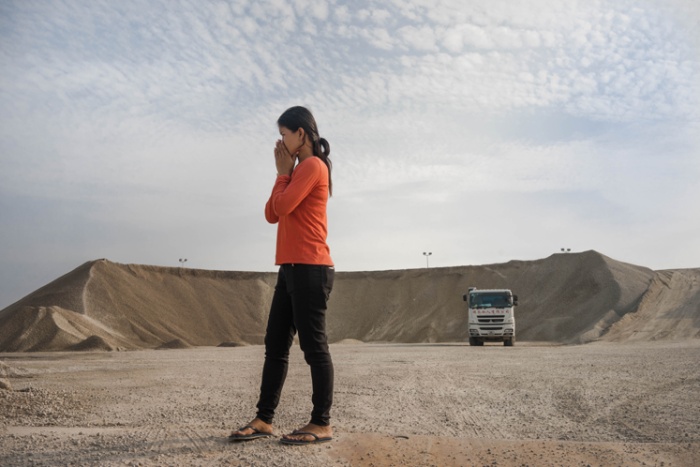
Vy Phalla, bohaterka filmu "Last World", Kalyanne Mam. Zdjęcie: Mona Simon.
I tell my son that the Khmer word for “bomb” is, គ្រាប់បែក (pronounced, krob bike), which literally means “a broken seed.” Accordingly, a bomb – a landmine, a plastic bag – these are a seed’s antithesis. They stand not outside the cycles of life, but violently against them; dark seeds turned against themselves, destroying life’s own telling.
We return to our small land often, and show our son what it is to plant better seeds. To grow something good. One day his brain will understand: That is a seed. This is a story. Add some clean water, for this is life.
BIO
Ben Valentine is a writer currently living in Cambodia. Having worked previously as a staff writer for Hyperallergic and SFAQ, Ben now works independently. Publications include Salon, The New Inquiry, Motherboard, Arts Asia Pacific, Los Angeles Review of Books, and many more. Ben has lectured for SAIC, SXSW, the Museum of the Moving Image in NYC, 98B, in Manila, and many more. Ben is deeply committed to sharing with a wide audience, and worked as an art history teacher in Phnom Penh; helped run Sammaki Community Arts, in Battambang, Cambodia; worked in Public Programming for SA SA BASSAC, in Phnom Penh; and has led workshops on art writing and theory at SA SA BASSAC, A.Farm, in Ho Chi Minh City, and Sammaki Community Arts. In 2018, he co-founded an intimate, invite-only writing retreat, which has so far convened in Cambodia, Malaysia, and Vietnam. He was once chased by elephants in Tanzania and can read children’s books in Khmer.



